Christmas cactus care is easy when you provide the right light, water, and soil. This winter-blooming succulent thrives indoors, adding festive color to your home when most plants are dormant.
Botanically known as Schlumbergera x buckleyi (formerly S. bridgesii), this holiday cactus features vibrant tubular-shaped flowers. In the Northern Hemisphere, blooms appear in December and January, when you most want a splash of color indoors.
This holiday plant is often confused with its cousin, the Thanksgiving cactus (Schlumbergera truncata). The easiest way to tell them apart is by the leaf edges—Christmas cactus has smooth, rounded segments, while Thanksgiving cactus leaves have sharper, pointed tips.
In this guide, I’ll share how to keep your Christmas cactus healthy year-round and ways to encourage reliable blooms every winter. With a little attention, you’ll have plants that will not only survive, but thrive.

Some of the links below are affiliate links. I earn a small commission, at no additional cost to you, if you purchase through an affiliate link.
Christmas cactus overview
Here is a quick guide to the care of Schlumbergera x buckleyi:
- Common names: Christmas cactus, true Christmas cactus, holiday cactus
- Botanical name: Schlumbergera x buckleyi (S. x buckleyi)
- Family: Cactaceae
- Plant type: Epiphytic succulent cactus
- Sunlight needs: Bright, indirect light
- Soil requirements: Well-draining, slightly acidic potting mix
- Fertilizer: Apply during the growing season (spring through early fall)
- Bloom time: Mid to late winter
- Flower color: A wide range of colors, depending on the cultivar
- Mature size: 12-18 in (30-45 cm) wide, 6-12 in (15-30 cm) tall
- Hardiness zones: 10-12
- Native area: Rainforests of Brazil
- Toxicity: Mild stomach problems for pets if large amounts are ingested
Christmas cactus colors
Christmas cactus (Schlumbergera x buckleyi) produces flowers in a stunning range of colors, including pink, red, white, purple, orange, and yellow. These colors vary by the cultivar and are sure to add pops of color to your home during the winter months.
The different flower colors can indicate subtle care differences. For example, plants with lighter-colored flowers may benefit from slightly more light, while darker blooms often do well with moderate light conditions.
Paying attention to these factors helps your Christmas cactus develop long-lasting flowers.
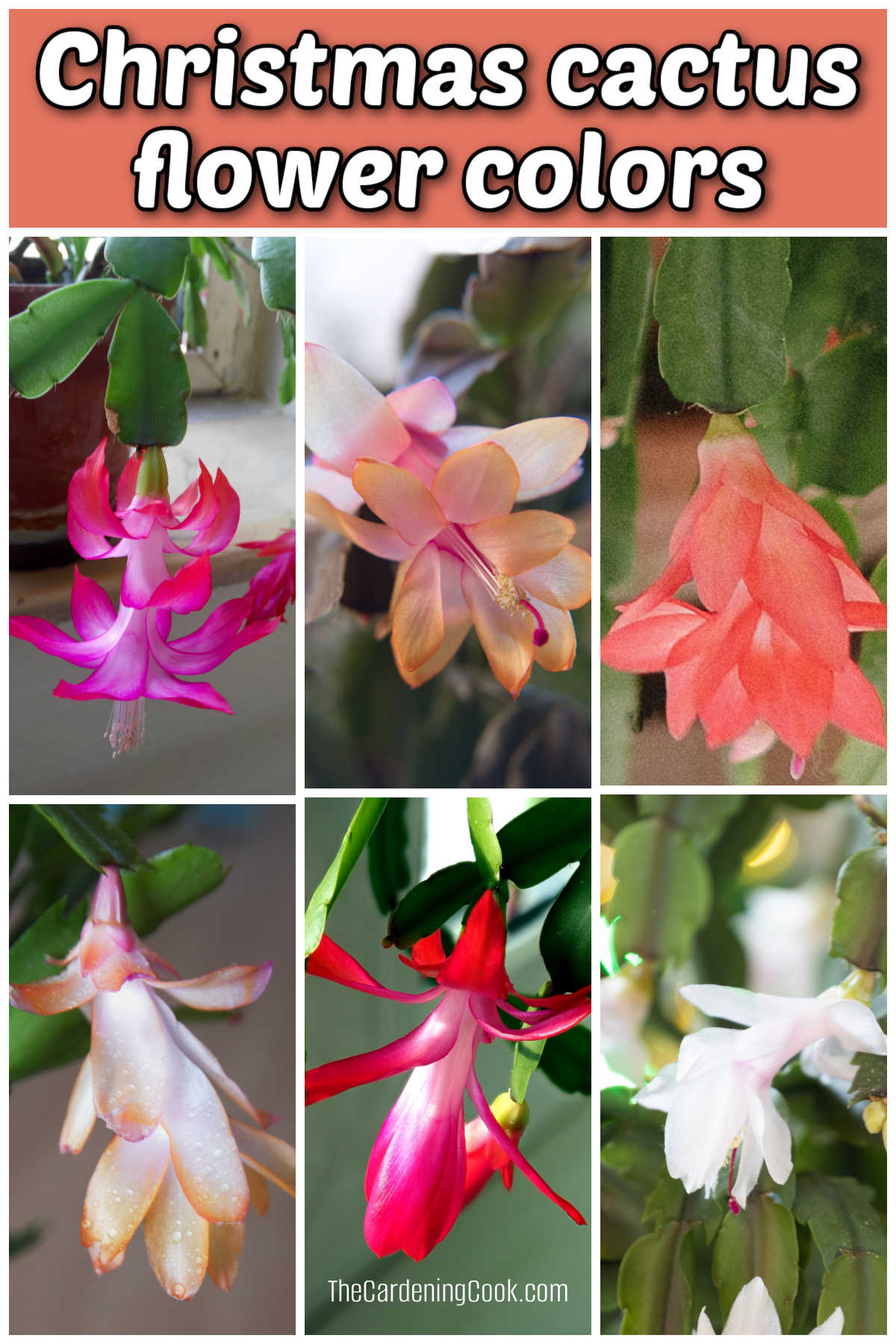
Christmas cactus care
Follow the practical care tips below to keep your Christmas cactus plant healthy and thriving indoors for years to come.
Light requirements
Christmas cactus likes bright, indirect light.
- An east-facing window is ideal. Alternatively, a few feet away from a south or west-facing window is fine.
- Avoid direct sunlight—this can make the leaves turn reddish instead of green.
I like to keep my Christmas cactus on a table in a south-facing window with a sheer curtain to limit the sunlight.
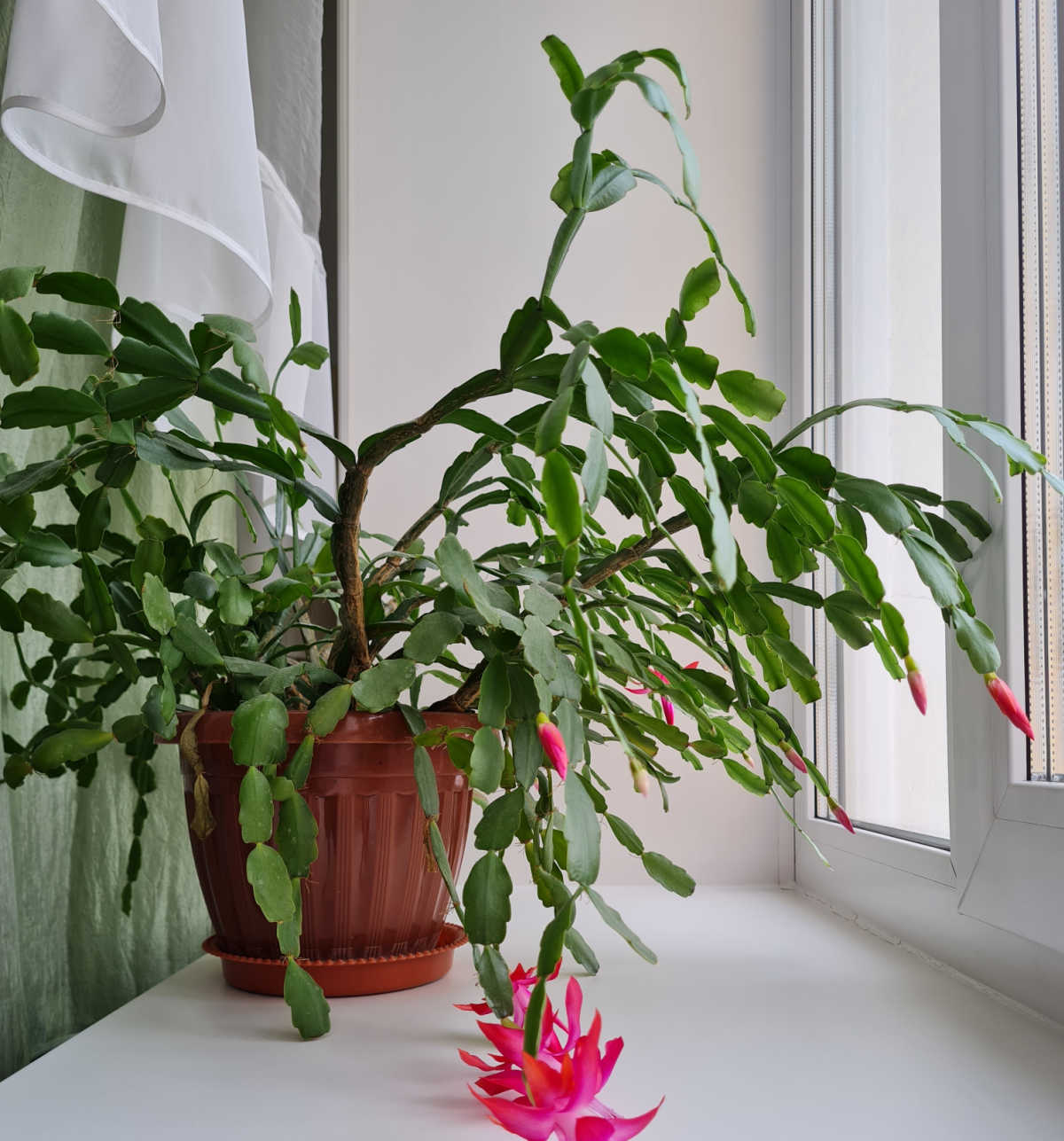
Soil needs
The right soil makes all the difference to the health of S. x buckleyi.
- Choose a well-draining soil designed for cacti and succulents.
- You can also make your own soil mix using one part perlite or sharp sand with two parts normal potting mix.
- Repot every 2-3 years after the plant flowers so that it doesn’t become root-bound.
I keep my Christmas cactus in a clay pot since it is porous and helps prevent the soil from getting too soggy.
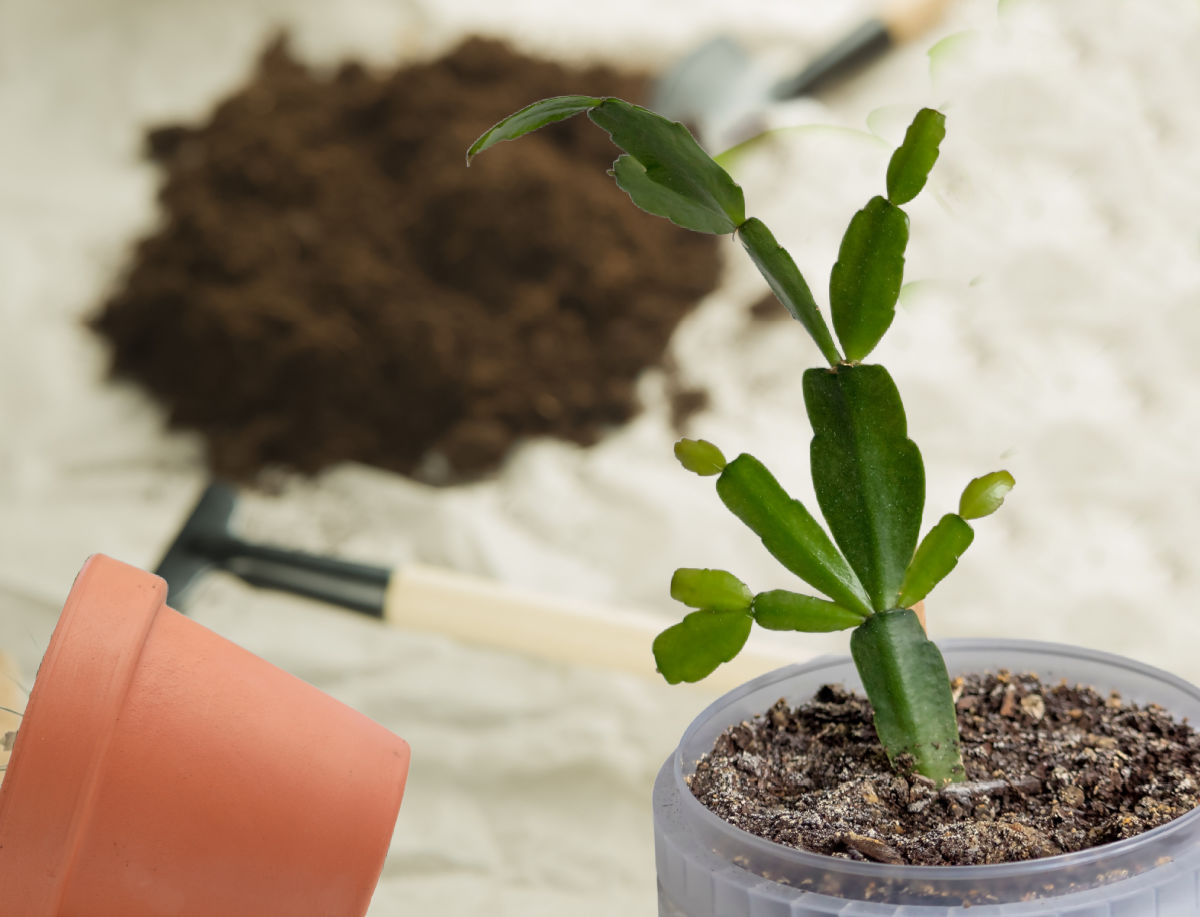
How to water a Christmas cactus
Proper watering is key to a strong, healthy Christmas cactus.
- Keep the soil lightly moist during the growing season (mid-spring to late summer).
- Allow the soil to dry out about 1 inch down before rewatering.
- Reduce the watering slightly in the fall until buds form.
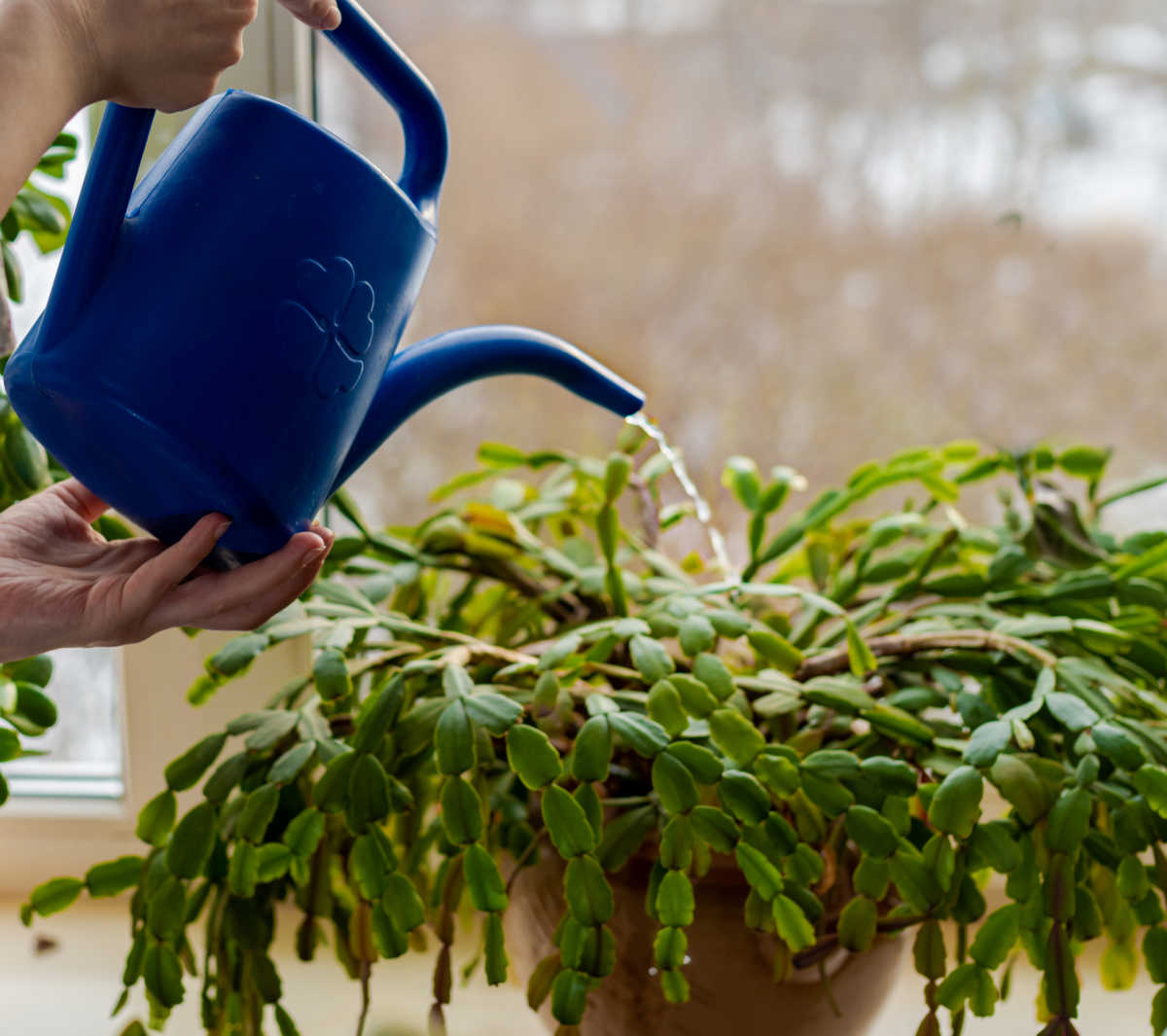
Humidity requirements
Even though the Christmas cactus is in the cactus family, its native area is the rainforest of Brazil. For this reason, it likes higher humidity (around 50-60%) compared to other cactus plants. Some ways to increase humidity for your holiday cactus are:
- Group plants together to raise the humidity around them all.
- Place your Christmas cactus on a tray lined with pebbles sitting in water.
- Mist the foliage occasionally.
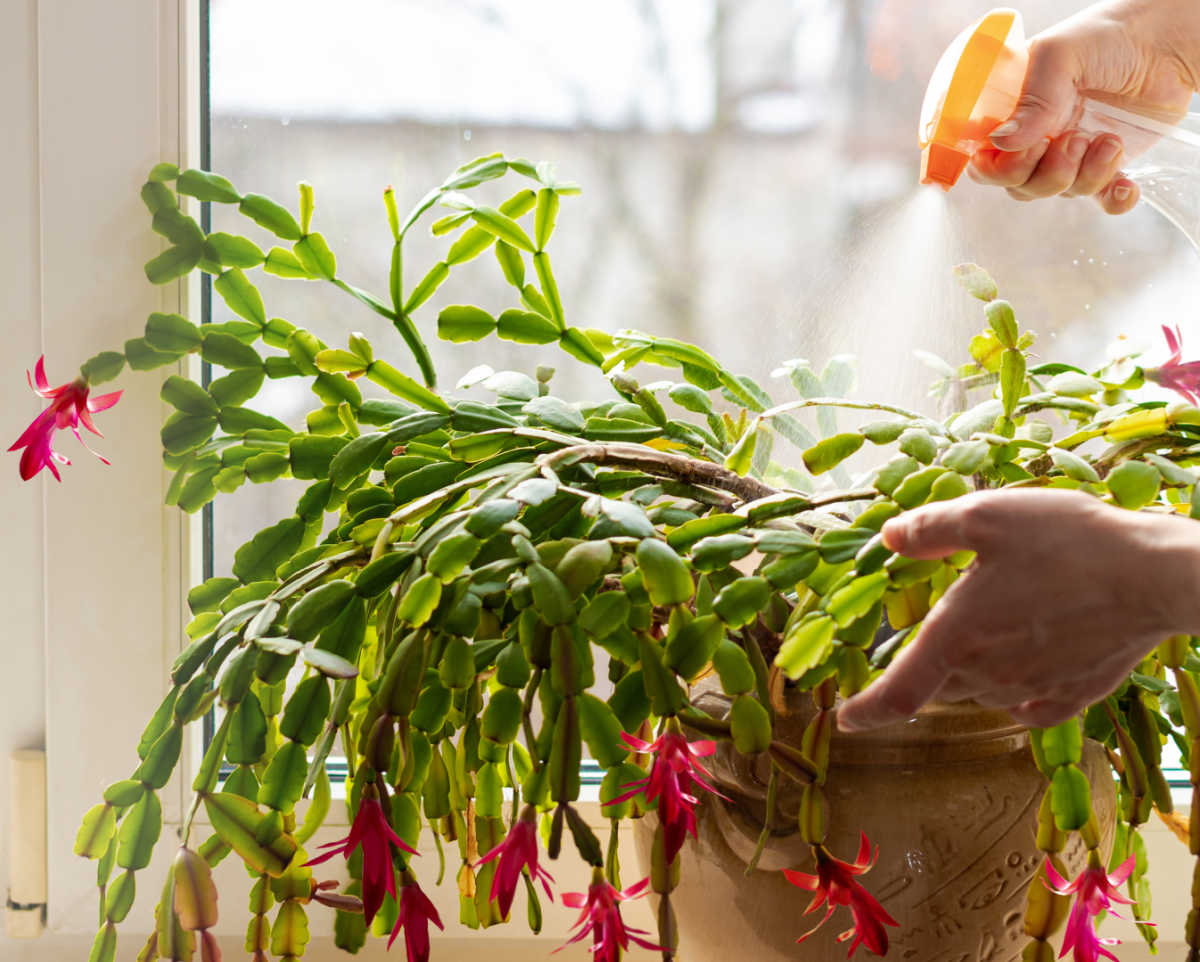
Fertilizing Christmas cactus
Feeding your plant supports growth, blooms, and overall health.
- Apply a well-balanced water-soluble fertilizer every 4-6 weeks from spring through early fall.
- Stop feeding in late fall, so that your plants can rest before they bloom.
To encourage blooms each year, adjust light and temperature in the fall. For a detailed step-by-step guide, see my tips on getting your Christmas cactus to rebloom each year.
Pruning and maintenance
Pruning a Christmas cactus encourages it to branch out and become bushy. It also limits pest problems.
- Pinch out growing tips after the plant flowers.
- You can remove up to 1/3 of the plant.
- These cuttings can be used to grow new plants for free!
Common problems for a Christmas cactus
S. x buckleyi is not too bothered by pests and diseases. Here are some things to watch out for:
- Check for mealybugs, thrips, spider mites, and scale insects. Improper watering, low humidity, and incorrect feeding can cause them.
- Root rot can be a problem for plants that are watered too much.
- Leaf spots can be caused by too much water sitting on the leaves.
- Too much light weakens the plant and can cause shriveled leaves.
- Too little light causes spindly stems and little to no flowers.
- Temperature extremes, low humidity, and sudden drafts can cause bud drop.
Propagating Christmas cactus
Schlumbergera x buckleyi is easily propagated with stem cuttings. Mature plants can also be divided (although this is a less common method) to create more plants for free.
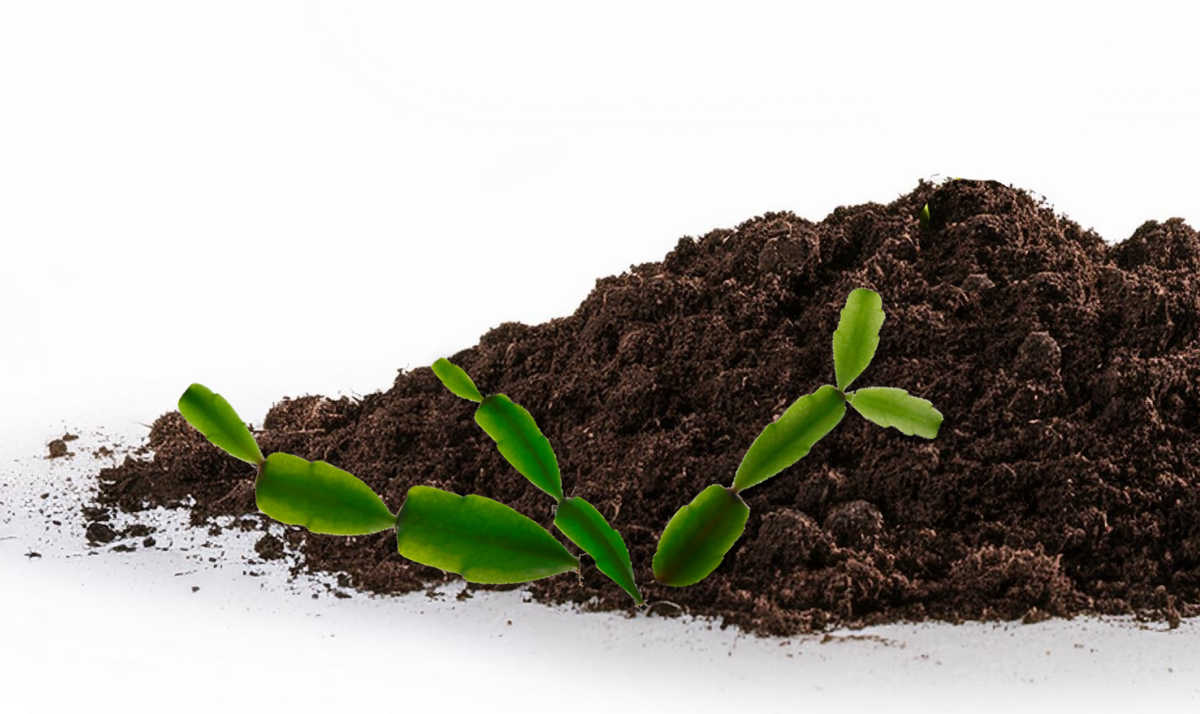
- The most reliable method of propagation is with stem cuttings in soil.
- Use well-draining soil.
- Keep the soil lightly moist but never soggy.
- Grow them in a mini-greenhouse setting, under bright, indirect light.
- New roots usually develop in 2-4 weeks.
I like to grow Christmas cactus cuttings in festive pots to give to my plant friends for the holidays.
More holiday plants to enjoy
If you love the color that the flowers of a Christmas cactus bring to your home in winter, you might also enjoy growing these other seasonal favorites.

- How to grow poinsettia plants—Keep your poinsettia colorful during the holidays and into the New Year.
- Forcing amaryllis bulbs indoors—Grow stunning amaryllis blooms for Christmas with these easy tips.
- Growing florist cyclamen plants for the holidays—Learn how to keep your cyclamen thriving indoors when the ground outside is covered in snow.
Share this guide for growing a Christmas cactus on X
If you enjoyed learning how to care for your holiday cactus, why not share this guide with a friend? Here is a post to get you started:
🎄✨ Want a pop of color in your home for the holidays? Try growing a Christmas cactus!🌸🌿👉 Head to The Gardening Cook for light, watering, and soil tips to keep your Schlumbergera x buckleyi blooming and thriving. #ChristmasCactus… Share on XPin this post about caring for a Christmas cactus
Would you like a reminder of this post for Christmas cactus care? Pin this image to one of your gardening boards on Pinterest so that you can easily find it later.
You can also watch this YouTube slideshow video about growing Christmas cactus!
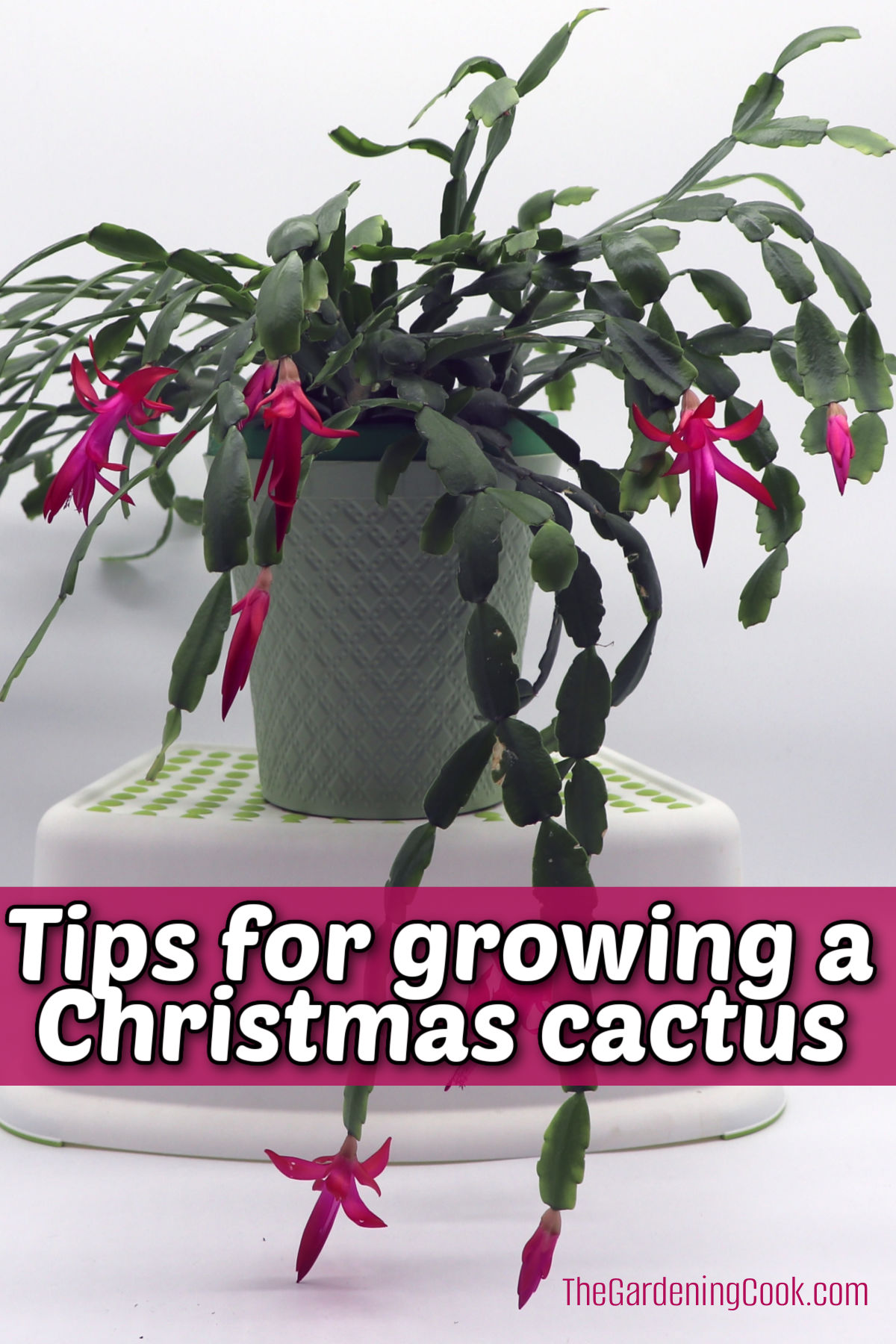
Admin note: This Christmas cactus care guide first appeared on the blog in November 2015. This post has been updated with new photos, a printable care card, and a slideshow video.
Christmas Cactus Care: How to Grow Schlumbergera x buckleyi Indoors
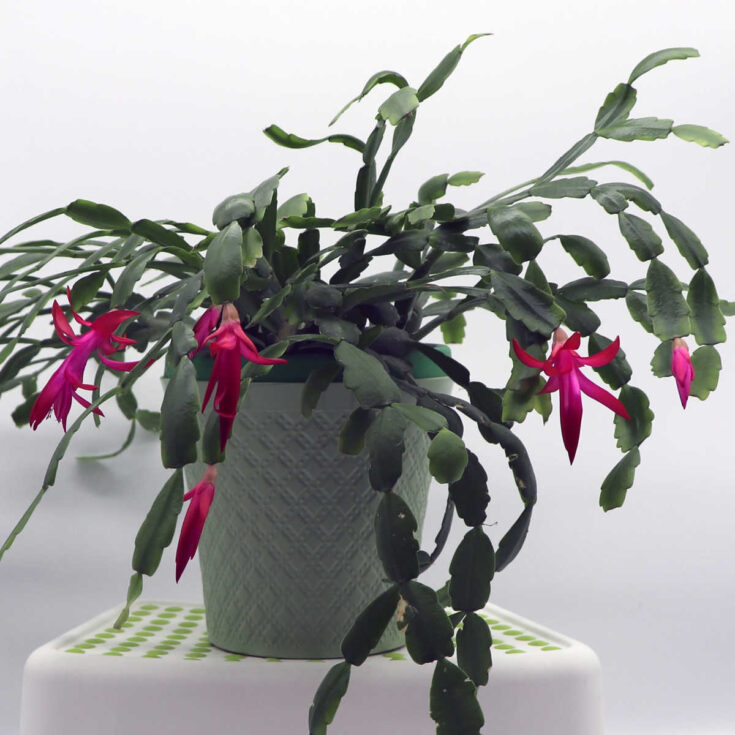
Schlumbergera x buckleyi is a holiday cactus that flowers in the winter. It is easy to grow and has long-lasting tubular flowers.
It has many common names: Christmas cactus, winter cactus, and holiday cactus.
Materials
- Schlumbergera x buckleyi plant
- Succulent soil
- Balanced liquid plant food
Tools
- Watering can
Instructions
- Plant Christmas cactus in cacti/succulent soil that drains well.
- Terracotta pots work best, since they are porous.
- You can grow the plant outdoors in the shade during the summer months, but bring it indoors if the temperature drops below 50° F (10° C).
- Place the pot in bright light but not direct sunlight.
- Keep evenly moist during the growing time, from spring to last summer.
- Decrease watering in fall until buds form.
- When watering, allow the top layer of soil to dry out before watering again.
- Fertilize with a balanced liquid plant food during the active growing time (spring through late summer) every 4-6 weeks. Stop fertilizing in the fall.
- The blooming season is from December and January in the northern hemisphere.
- Prune well in the spring to encourage a bushier plant.
- Propagate from leaf cuttings in the spring.
- The plant is only cold-hardy in zones 10 and above. In other locations, grow it as a houseplant.
- Watch out for mealy bugs, spider mites, and root rot from too much watering.
- To get the Christmas cactus to flower in subsequent years, place it in a cool, dark room at night and bring it out to a lighter spot during the day. This mimics its conditions in nature in late fall.
Recommended Products
As an Amazon Associate and member of other affiliate programs, I earn from qualifying purchases.
![Schlumbergera x buckleyi - Christmas Cactus [large]](https://thegardeningcook.com/wp-content/uploads/2025/12/schlumbergera_christmas_cactus_flower__76082.1677021382.740.740__30037.1766010232.555.555.jpgc3.jpg)


altrincham
Tuesday 25th of November 2025
The Gardening Cook offers a delightful blend of gardening tips and culinary inspiration, making fresh produce the star of every meal. Their content is practical, creative, and easy to follow for both beginners and seasoned gardeners. It’s a refreshing way to connect nature with the kitchen.
weightgone
Tuesday 25th of November 2025
TheGardeningCook shares a perfect blend of gardening tips and culinary inspiration. Their content makes growing your own ingredients feel fun and accessible. A great resource for anyone who loves fresh, homegrown meals.